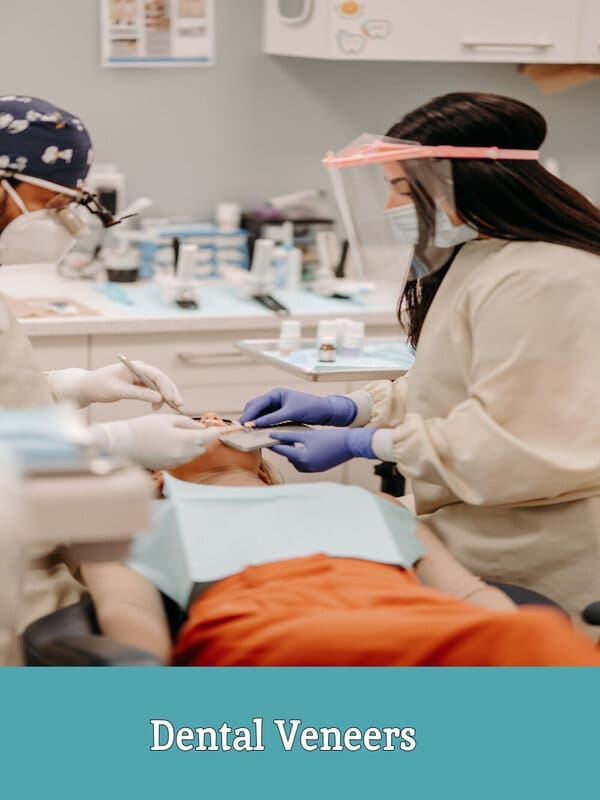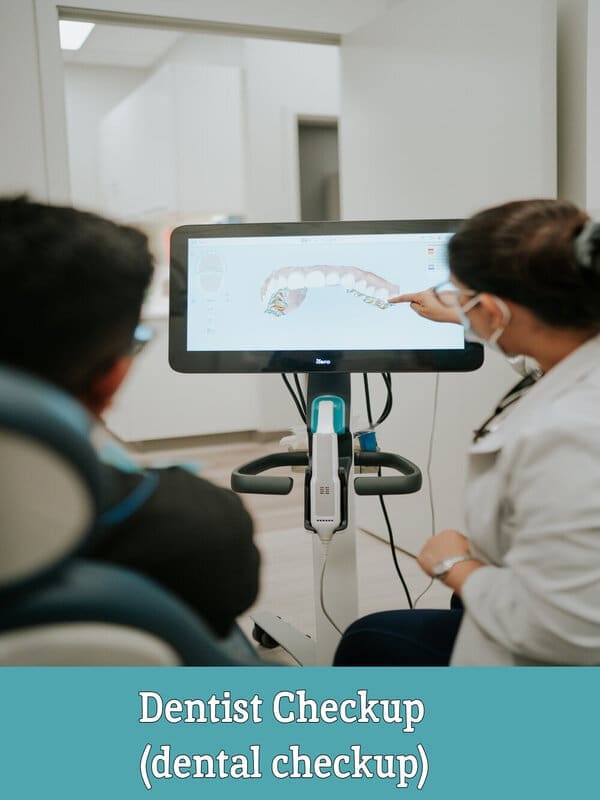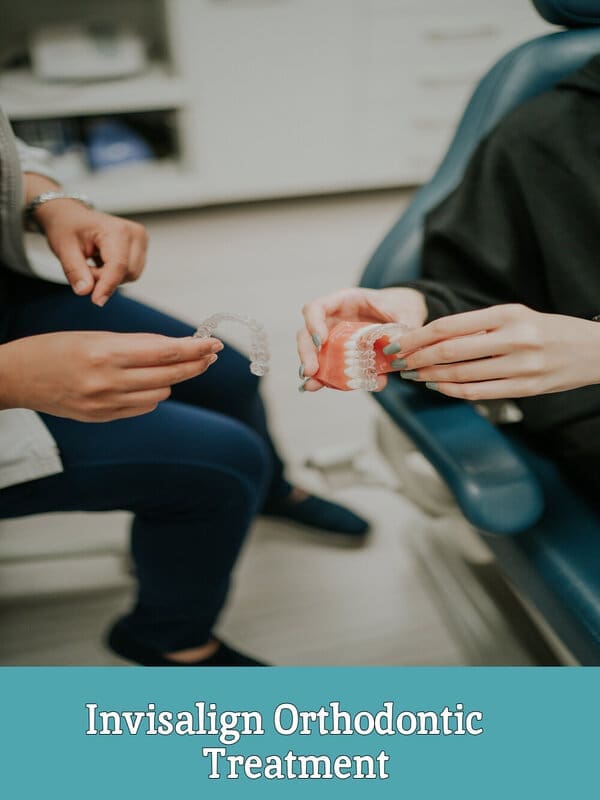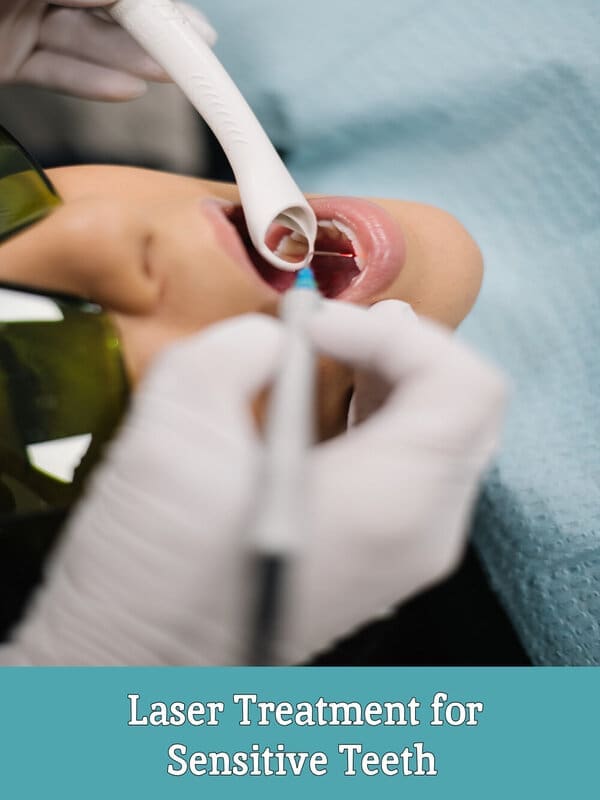Dental Crowns and Dental Bridges
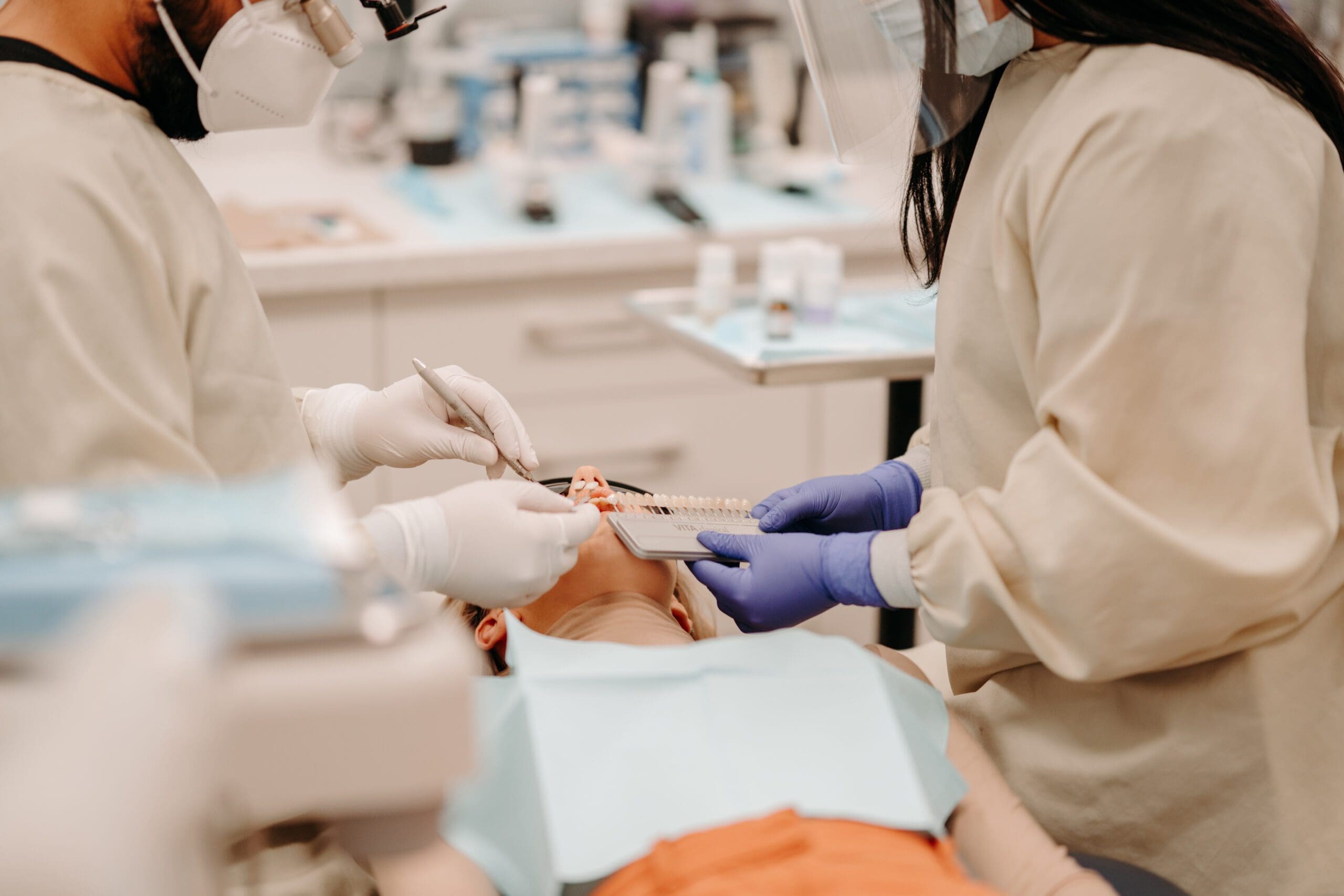
What Are Dental Crowns?
Dental crowns, also known as tooth caps, are a common dental treatment provided by dental crown clinics. They are custom-made prosthetic devices that are placed over a damaged or decayed tooth to restore its shape, size, strength, and appearance. Dental crowns are designed to fully encase the visible portion of the tooth above the gum line.
The primary purpose of dental crowns is to protect and strengthen weakened teeth. When a tooth has been extensively damaged due to decay, trauma, or root canal treatment, dentists may recommend a dental crown service.
This service involves preparing the tooth by removing any existing decay or weakened structure and reshaping it so that it can securely hold the dental crown. Dental crowns can be made from various materials, including,
- porcelain-fused-to-metal (PFM),
- all-ceramic or all-porcelain,
- metal alloys like gold or silver, and even zirconia.
The choice of material depends on factors such as esthetic considerations, strength requirements, and budgetary constraints.
One of the advantages of dental crowns is their ability to restore both functionality and aesthetics. They can improve the appearance of discolored or misshapen teeth while providing durability for everyday tasks like biting and chewing. If you live in Edmonton, our dental crown clinic near you offers a range of options to cater to individual needs.
In addition to their protective function in restoring damaged teeth, dental crowns can also serve as anchors for dental bridges. A bridge is a fixed prosthetic device used to replace one or more missing teeth by joining an artificial tooth (pontic) with adjacent natural teeth (abutments) on either side. By supporting the bridge with dental crowns on these abutment teeth, patients can regain their ability to speak clearly and chew properly. Patients seeking low-cost dental crowns should consult with reputable clinics offering affordable options without compromising quality.
What Are Dental Bridges?
Dental bridges are a common and effective solution for restoring missing teeth. These dental appliances literally bridge the gap created by one or more missing teeth, providing both aesthetic and functional benefits.
Dental bridges consist of two main components: the abutment teeth and the pontic(s).
Abutment Teeth
The abutment teeth are healthy natural teeth or dental implants on either side of the gap, which serve as anchor points for the bridge.
These anchor teeth are prepared by reshaping them to accommodate dental crowns or caps that will act as support for the bridge. Our tooth caps clinic near you is equipped to provide such services efficiently.
Pontic(s)
The pontic(s) are the artificial tooth/teeth that fill in the space left by missing teeth. They are custom-made to match the shape, size, and color of your natural teeth, ensuring a seamless integration into your smile.
Different materials can be used for pontics, including porcelain fused to metal (PFM), all-ceramic (such as zirconia), or even gold alloys for specific cases.
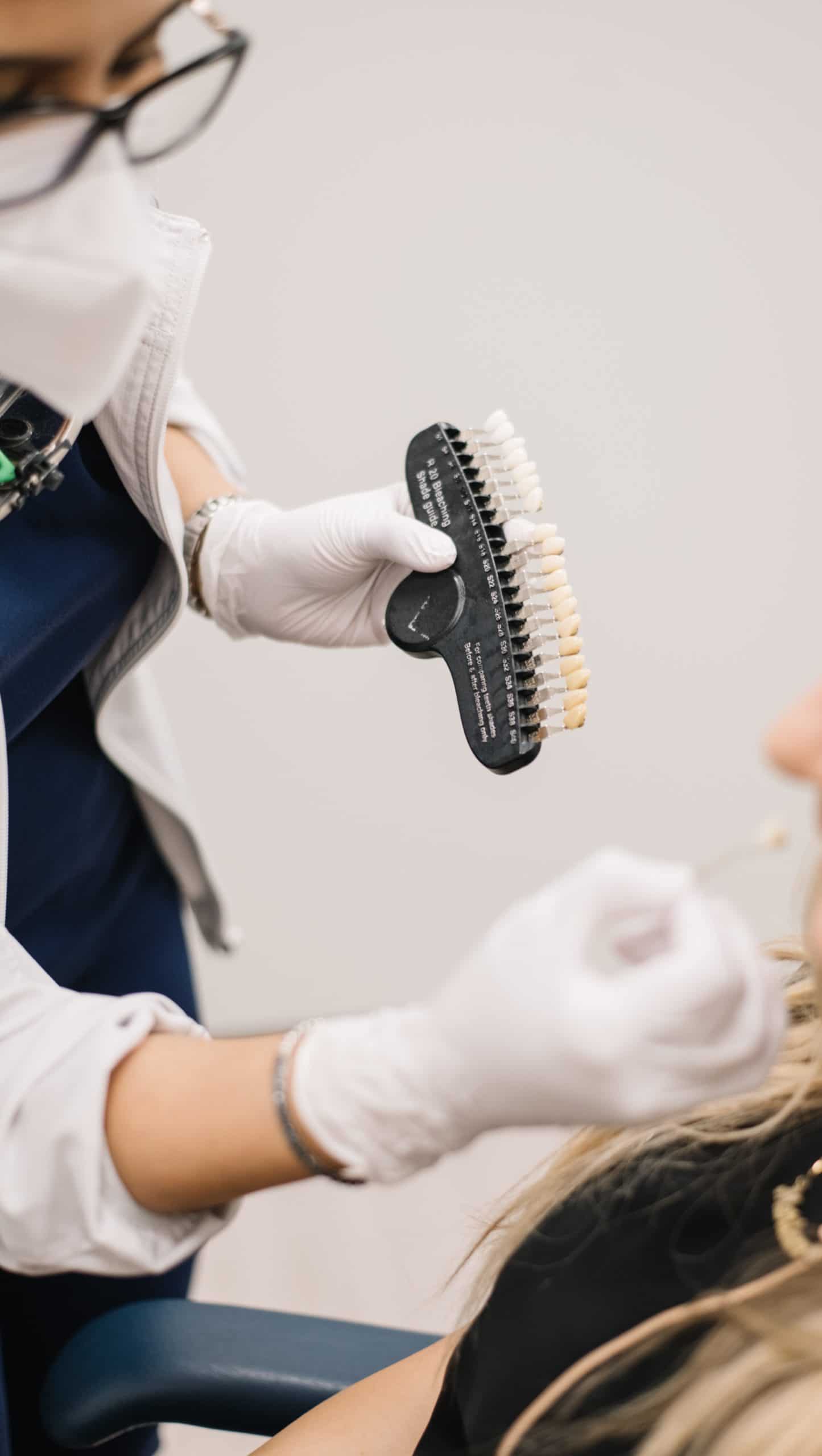

Procedure of a dental crown or a dental bridge
Tooth preparation: At first visit, Local anesthesia is used to maintain patient comfort. The dentist will prepare the tooth/teeth.
Impression: A digital scan and an impression taken of the tooth surroundings.
Temporary crown or bridge: A temporary crown or bridge will be placed over a prepared tooth for protection until a permanent crown is crafted.
Crown or bridge fabrication: The digital scan that was taken to measure your teeth size is sent to the laboratory to prepare your customized Permanent crown or permanent bridge. This might take a week.
Placement of a crown or bridge: Once your permanent crown is ready to be placed you will visit the clinic and dentist will remove the temporary crown and put the permanent one to check if it’s fitting accurately and the color is matching the rest of your teeth.
Cementing: On your second visit, the permanent crown or bridge is cemented or bonded in place using dental cement.
Final Adjustments: The dentist will make any required final adjustments to ensure a comfortable bite and a normal appearance.
Polishing: The excess cement will be removed and the tooth will be polished.
Post-care: You may feel a little discomfort after the procedure but it will eventually fade away. The dentist will give you instructions to follow. In most cases, patients are advised to maintain their 6 month regular dental hygiene routine. The regular periodontal maintenance (dental hygiene) may be different depending on the patients periodontal health and routine advised by our dentist and dental hygienist.
The 4 main types of dental bridge services
Dental bridges are dental prosthetics used to replace missing teeth. There are several types of dental bridges, and they can be broadly categorized into four major types:
Traditional Dental Bridges:
Traditional bridges are the most common type, consisting of one or more pontic (artificial) teeth held in place by dental crowns.
The crowns are placed on the natural teeth, called abutments, on either side of the gap left by the missing tooth or teeth.
Traditional bridges are effective when strong, healthy teeth are adjacent to the gap to support the crowns.
Cantilever Dental Bridges:
Cantilever bridges are similar to traditional bridges but are supported by an abutment tooth on only one side of the gap.
This type of bridge is used when there is only one natural tooth next to the missing tooth, making it unsuitable for a traditional bridge.
While cantilever bridges can be a solution in certain cases, they may exert more force on the supporting tooth.
Maryland (Resin-Bonded) Dental Bridges:
Maryland bridges consist of a pontic tooth held in place by a metal or porcelain framework.
Instead of using dental crowns, Maryland bridges rely on metal or porcelain wings bonded to the back of adjacent natural teeth for support.
This type of bridge is often used when the adjacent teeth are healthy and strong, and minimal alteration of the supporting teeth is desired.
Implant-Supported Dental Bridges:
Implant-supported bridges are secured in place by dental implants rather than natural teeth.
Dental implants are surgically placed in the jawbone to serve as artificial tooth roots, and the bridge is then attached to the implants.
This type of bridge is a durable and stable solution, especially when multiple adjacent teeth are missing, as it doesn’t rely on natural teeth for support.
Each type of dental bridge has its own advantages and considerations. The choice of which type to use depends on factors such as the location of the missing teeth, the overall oral health of the patient, and the preferences of the dentist and patient. It’s important to consult with a qualified dental professional to determine the most appropriate type of dental bridge for individual cases.
How are dental bridge services performed?
Tooth preparation: At the first visit, Local anesthesia is used to maintain patient comfort. The dentist will prepare the tooth/teeth.
Impression: A digital scan and an impression taken of the tooth’s surroundings.
Temporary crown or bridge: A temporary crown or bridge will be placed over a prepared tooth for protection until a permanent crown is crafted.
Crown or bridge fabrication: The digital scan that was taken to measure your teeth size is sent to the laboratory to prepare your customized permanent crown or permanent bridge. This might take a week.
Placement of a crown or bridge: Once your permanent crown is ready to be placed, you will visit the clinic, and the dentist will remove the temporary crown and put the permanent one to check if it fits accurately and if the color matches the rest of your teeth.
Cementing: On your second visit, the permanent crown or bridge is cemented or bonded in place using dental cement.
Final Adjustments: The dentist will make any required final adjustments to ensure a comfortable bite and a normal appearance.
Polishing: The excess cement will be removed, and the tooth will be polished.
Post-care: You may feel a little discomfort after the procedure, but it will eventually fade away. The dentist will give you instructions to follow. Patients are usually advised to maintain their 6-month regular dental hygiene routine. Regular periodontal maintenance (dental hygiene) may differ depending on the patient’s periodontal health and routine, as advised by our dentist and dental hygienist.
Signs you need dental bridge services
Dental bridges are used to replace missing teeth and can be recommended in various situations. Here are some common scenarios when dental bridges may be necessary:
Missing Teeth: The most common reason for getting a dental bridge is to replace one or more missing teeth. The bridge fills the gap left by the missing teeth and helps restore the functionality and appearance of the mouth.
Chewing Difficulties: Missing teeth can make it challenging to chew food properly. A dental bridge can improve the ability to bite and chew, making it easier to enjoy a normal diet.
Speech Issues: Gaps in the teeth can affect speech, leading to difficulties in pronouncing certain words or sounds. A dental bridge can help improve speech clarity by filling in the spaces caused by missing teeth.
Maintaining Facial Shape: Teeth play a role in supporting the facial structure. When teeth are missing, it can lead to changes in the shape of the face, causing the cheeks to sink in. Dental bridges can help maintain the natural contour of the face.
Preventing Shifting of Teeth: When a tooth is lost, adjacent teeth may start to shift into the empty space, affecting the alignment of the remaining teeth. A dental bridge can prevent this shift and maintain proper tooth alignment.
Improving Appearance: Beyond the functional aspects, dental bridges contribute to a more aesthetically pleasing smile. They are designed to match the color, shape, and size of natural teeth, enhancing the overall appearance of the mouth.
Dental Restoration After Extraction: In some cases, a tooth may need to be extracted due to decay, infection, or other dental issues. A dental bridge can be used to replace the extracted tooth and restore the functionality of the affected area.
It’s important to consult with a dentist to determine the most suitable treatment option for your specific situation. Dental bridges are one of several options for replacing missing teeth, and the choice may depend on factors such as the number of missing teeth, the condition of adjacent teeth, and overall oral health.
Signs you need a dental crowns service
Dental crowns, also known as dental caps, are used in various situations to restore the structure, function, and appearance of a damaged or weakened tooth. Here are some common scenarios when dental crowns may be recommended:
To Protect a Weak Tooth: If a tooth is weakened due to decay, a large filling, or a root canal treatment, a dental crown can be placed over the tooth to provide strength and protection. The crown helps prevent further damage and fracture.
After Root Canal Therapy: Following a root canal procedure, where the pulp of the tooth is removed, the remaining tooth structure can become brittle. A dental crown is often placed to protect and strengthen the tooth after a root canal.
For Severe Tooth Decay: When a tooth has extensive decay that cannot be adequately restored with a dental filling, a crown may be recommended to cover and protect the remaining tooth structure.
To Restore a Broken or Fractured Tooth: Dental crowns are commonly used to repair teeth that are cracked, broken, or fractured. The crown encases the damaged tooth, holding it together and preventing further fractures.
To Improve Tooth Appearance: Dental crowns can be used for cosmetic purposes to improve the appearance of a tooth. They are often chosen to cover discolored or misshapen teeth, enhancing the overall aesthetics of the smile.
To Cover a Large Filling: When a tooth has a large filling, and there is a risk of the remaining tooth structure fracturing, a dental crown may be recommended to provide additional support and protection.
For Dental Bridges: Dental crowns are used as anchor points for dental bridges. The crowns are placed on the natural teeth adjacent to the gap created by missing teeth, and the bridge spans the empty space, supported by the crowns.
To Cover Dental Implants: Dental crowns are the visible part of a dental implant restoration. After a dental implant is surgically placed in the jawbone and has integrated with the bone, a crown is attached to the implant to replace the missing tooth.
To Correct Cosmetic Issues: Dental crowns can be used to address cosmetic imperfections, such as poorly shaped or sized teeth, providing a natural and harmonious appearance to the smile.
If you are experiencing any dental issues or are concerned about the condition of your teeth, it’s important to consult with a dentist. They can assess your oral health and recommend appropriate treatments, which may include dental crowns when necessary.
Dental Bridge Services in Edmonton
Dental crowns and dental bridges effectively protect damaged teeth, providing both functional and attractive benefits. Low-cost dental crowns may offer a cost-effective solution for restoring your smile. If you are looking for dental bridge services in Edmonton, Clean Smiles Dental Hygiene Clinic welcomes you to experience our top-notch services. Our skilled dentist at our dental bridges clinic will examine your oral health and suggest the best affordable dental crowns and dental bridge services. We follow the Alberta Fee Guide to provide dental service.
Book Your Appointment
We will contact you shortly to schedule your appointment


